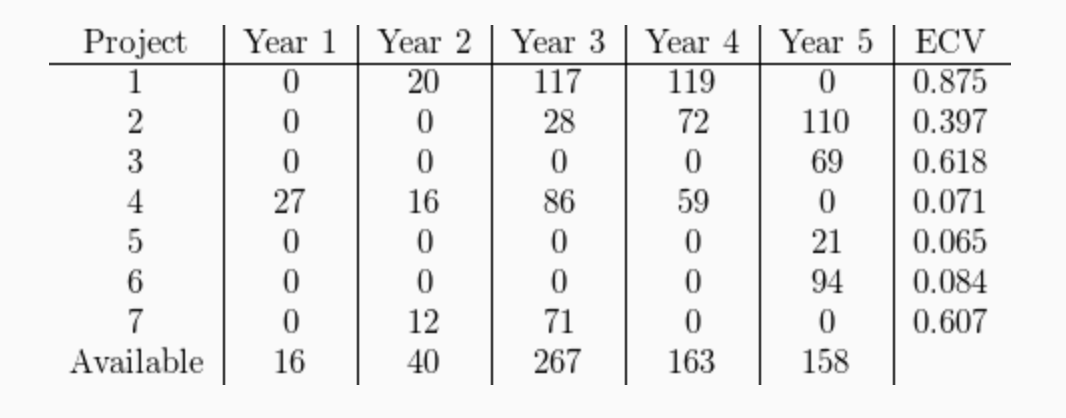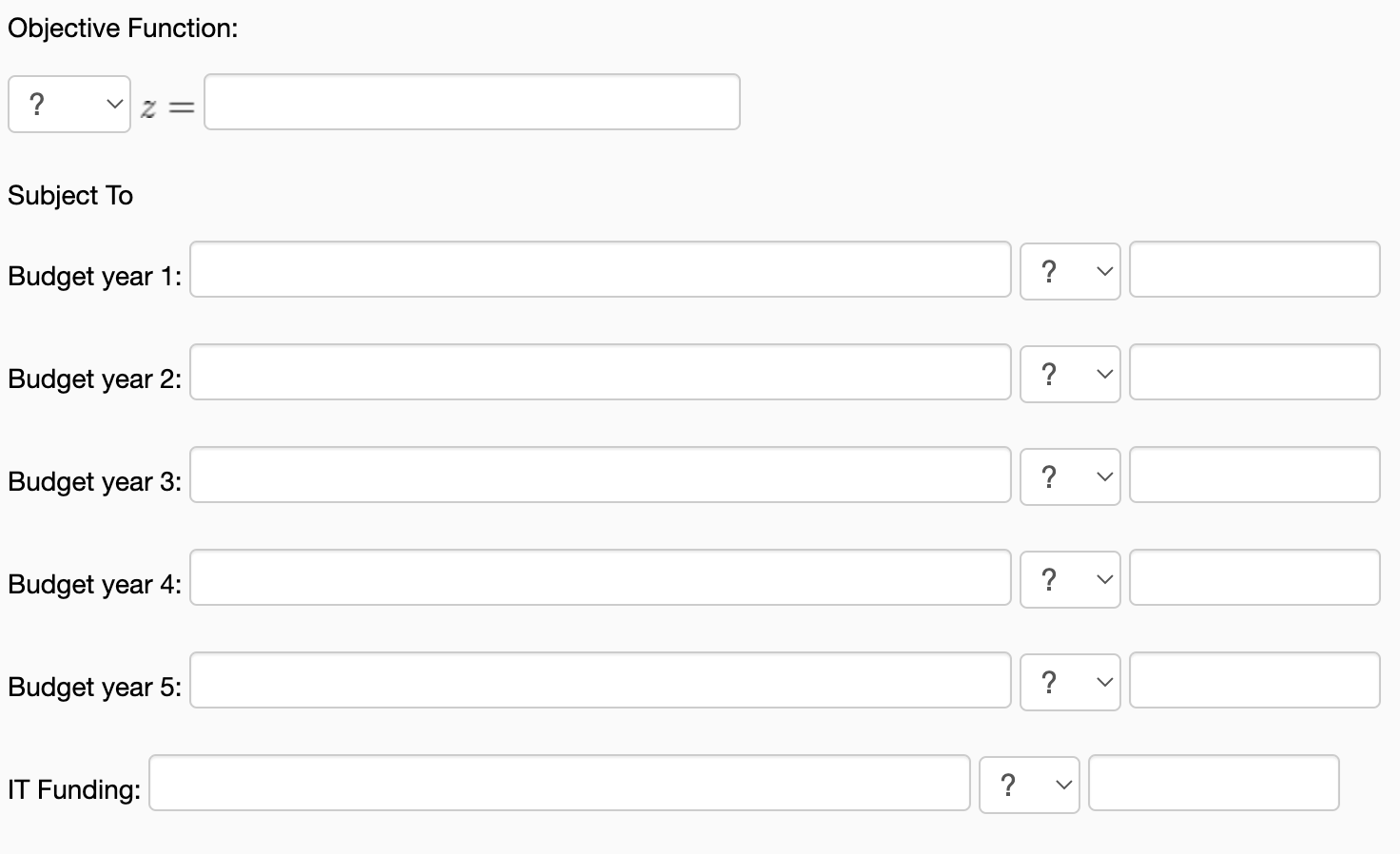Question
onathon's Restaurant's has a portfolio of 7 proposed projects over a 5 year planning horizon. Unfortunately, the total requested funding (all amounts specified in millions)
onathon's Restaurant's has a portfolio of 7 proposed projects over a 5 year planning horizon. Unfortunately, the total requested funding (all amounts specified in millions) is $921 and Jonathon's has only $644 available for funding projects during the next 5 years.
In order to maximize the value of Jonathon's project portfolio, Martin Weir, a project controller responsible for the project selection and funding process, wants to determine the funding that will maximize the ECV of the company's proposed projects. The table below (all monetary values shown in $ millions) shows the funding requests for 7 projects. Additionally, the table includes the ECV for every project and the available funds for each of the 5 years in the planning horizon. When selecting and awarding funding to projects, the available funds must not be exceeded in any year. Additionally, the company has has decided to cap IT project funding; IT projects may not exceed 40% of total funds awarded (i.e. allocated projects) over the entire planning horizon. The following are classified as IT projects: 4, 6, 7.
Marty has confirmed that projects may be partially funded and that the ECV realized for partially funded projects will be proportional to the project's allocated funding relative to its requested funding. Help him out by formulating a mathematical program to select an optimal funded project portfolio. Let x1, x2, ..., x7 be the percentage of the funding request awarded (i.e. funded) for projects 1, 2, ..., 7 respectively. Because decision variable values represent percentages, all decision variable values must be in the range [0, 1]. However, these domain constraints are simple enough that Marty can handle defining them (you do not need to specify these "domain" constraints in your formulation, although you would have to include them in your MP setup if you wish to actually find the optimal funding for the proposed projects). Marty only needs you to formulate the following:
1. Objective function 2. Annual budget constraints (i.e. available funds constraints) 3. IT funding constraint.
Note: when specifying the mathematical expressions, you must explicitly specify multiplication (e.g. specify 20x1 as 20 * x1).


Step by Step Solution
There are 3 Steps involved in it
Step: 1

Get Instant Access to Expert-Tailored Solutions
See step-by-step solutions with expert insights and AI powered tools for academic success
Step: 2

Step: 3

Ace Your Homework with AI
Get the answers you need in no time with our AI-driven, step-by-step assistance
Get Started


